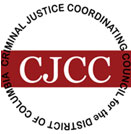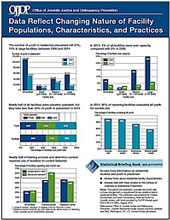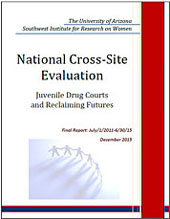Department of Justice Blog Supports Reforming Juvenile Life Sentences
 OJJDP Administrator Robert L. Listenbee and Office for Victims of Crime Director Joye E. Frost
OJJDP Administrator Robert L. Listenbee and Office for Victims of Crime Director Joye E. FrostMr. Listenbee and Ms. Frost note that Court decisions have established that children constitutionally differ from adults for sentencing purposes. Their blog underscores Office of Justice Programs’ work to support states and local stakeholders in implementing reforms for juvenile life sentences. That work includes two OJJDP-commissioned studies—Reforming Juvenile Justice: A Developmental Approach and Implementing Juvenile Justice Reform: The Federal Role—and OVC efforts for meeting victims’ postconviction needs. The agency heads also emphasize the need for collaboration at the state and local levels, and highlight a resource for victims by Pennsylvania’s Office of Victim Advocate, Department of Corrections, and Board of Probation and Parole that explains the parole process and role of various stakeholders within the state.
Operation Broken Heart Leads To Arrest of More Than 1,300 Suspected Child Sexual Predators
Launched in 2014, Operation Broken Heart is a yearly, coordinated, investigative operation that the OJJDP-funded Internet Crimes Against Children (ICAC) task forces carry out during April and May to identify and arrest suspected child sexual predators. Operation Broken Heart cracks down on individuals who—
- Possess, manufacture, and distribute child pornography.
- Entice children online for sexual purposes.
- Engage in the commercial sexual exploitation of children.
- Participate in child sex tourism by traveling abroad to sexually abuse children in other countries.
This year’s effort, Operation Broken Heart III, resulted in the arrest of 1,368 suspected child predators. ICAC task forces also conducted about 2,300 community presentations on Internet safety during the months of April and May.
OJJDP launched the ICAC task force program in 1998 to help federal, state, and local law enforcement agencies enhance their investigative responses to individuals who engage in technology-facilitated child exploitation. To date, the 61 ICAC task forces have reviewed more than 611,000 complaints of child exploitation, which resulted in the arrest of more than 66,000 individuals. In addition, since the ICAC program’s inception, more than 535,000 law enforcement officers, prosecutors, and other professionals have been trained on techniques to investigate and prosecute ICAC-related cases.
Read a press release about Operation Broken Heart III.
OJJDP Administrator Addresses Juvenile Justice Summit, Moderates Restorative Justice Panel Discussion
 On July 21, 2016, Administrator Listenbee addressed the DC Criminal Justice Coordinating Council's 7th Annual Juvenile Justice Summit preceding a panel discussion on restorative justice, which he moderated.
On July 21, 2016, Administrator Listenbee addressed the DC Criminal Justice Coordinating Council's 7th Annual Juvenile Justice Summit preceding a panel discussion on restorative justice, which he moderated.
In his remarks, Administrator Listenbee emphasized that OJJDP supports the evidence-based research behind restorative justice practices and that implementing these practices is an effective way to reduce youth involvement in the juvenile justice system. He said researchers have found that youth referred to restorative justice programming have better outcomes compared with youth referred to traditional juvenile court processing, including the number of later contacts with the justice system, the seriousness of later behavior, and the time to first reoffense. Mr. Listenbee also introduced Brecht Donoghue, OJJDP’s Deputy Associate Administrator for Innovation and Research, who provided an overview of national trends, demographics and risk factors, and the latest science on adolescent development.
Administrator Listenbee Speaks at Talent Pipelines Seminar
On July 29, 2016, Administrator Listenbee addressed a delegation of faculty from four historically black colleges and universities as part of The Florida Juvenile Justice Talent Pipelines Results-Based Leadership Program, hosted by the Annie E. Casey Foundation. The goal of the event, which was held in Orlando, FL, was to encourage faculty and administrators to more fully incorporate juvenile justice reform information into their curricula, expose students to the most up-to-date best practices, and create opportunities through internships and fellowships for students to experience the justice system firsthand and prepare for possible leadership roles in juvenile justice reform. Mr. Listenbee discussed OJJDP’s juvenile justice reform efforts in the areas of disproportionate minority contact and the need to ensure that school disciplinary practices are effective, equitable, and fair. In addition, he highlighted the importance of trauma-informed care, restorative justice practices, and engaging youth and families at all stages of juvenile justice system involvement.
Data Snapshot Provides Details About Youth Residential Placement Facilities
 OJJDP’s data snapshot series provides current research about youth in the juvenile justice system.
OJJDP’s data snapshot series provides current research about youth in the juvenile justice system.
The newest snapshot focuses on the changing nature of facility populations, characteristics, and practices using data collected by OJJDP's Juvenile Residential Facility Census. The data shows that in 2014—
- Following a 53-percent decline since 2000, the number of youth in residential placement fell below 51,000.
- Nearly half of all facilities were privately operated, but they held less than 30 percent of youth in placement.
- Four percent of all facilities were over capacity, compared with 8 percent in 2000.
More information on the characteristics of youth residential placement facilities can be found in OJJDP’s Statistical Briefing Book (SSB). SSB’s data analysis and dissemination tools give users quick and easy access to detailed statistics on a variety of juvenile justice topics.

Keep up with the Statistical Briefing Book on Twitter: @Statbb.
Journal Highlights Findings of OJJDP-Funded Juvenile Drug Courts Evaluation
The National Drug Court Institute has published a guest issue of Drug Court Review devoted to recent findings from the OJJDP-funded National Cross-Site Evaluation of Juvenile Drug Courts and Reclaiming Futures project.
The University of Arizona’s Southwest Institute for Research on Women led the evaluation, which examined the Juvenile Drug Courts/Reclaiming Futures initiative to improve juvenile drug courts. The journal’s articles and commentaries address integrating the Juvenile Drug Court: Strategies in Practice and the Reclaiming Futures models, policy and program implications, and how the findings can guide the future of federal, state, and local efforts.
Updated Guidelines on Handling Abuse and Neglect Cases Now Available
 The National Council of Juvenile and Family Court Judges (NCJFCJ) has released the recently revised and expanded “Enhanced Resource Guidelines.” This OJJDP-funded publication was originally published in 1995 and is designed for judges and court professionals to improve practices in child abuse and neglect cases. The guide covers all stages of the juvenile and family court process and focuses on how to best serve the children and families involved in the court system. The guide incorporates the most recent changes or additions in legal requirements and the continually evolving nature of information about promising practices in the handling of child abuse and neglect cases to build on the foundational material of the earlier document.
The National Council of Juvenile and Family Court Judges (NCJFCJ) has released the recently revised and expanded “Enhanced Resource Guidelines.” This OJJDP-funded publication was originally published in 1995 and is designed for judges and court professionals to improve practices in child abuse and neglect cases. The guide covers all stages of the juvenile and family court process and focuses on how to best serve the children and families involved in the court system. The guide incorporates the most recent changes or additions in legal requirements and the continually evolving nature of information about promising practices in the handling of child abuse and neglect cases to build on the foundational material of the earlier document.
OJJDP Study Examines Commercial Sexual Exploitation of Youth
The Center for Court Innovation has released the OJJDP-sponsored Youth Involvement in the Sex Trade: A National Study. This report examines a multisite study of youth involvement in the commercial sex trade across six sites: Atlantic City, NJ; the Bay Area (San Francisco/Oakland, CA); Chicago, IL; North Texas; Las Vegas, NV; and Miami, FL.
The report presents findings from nearly 1,000 youth interviews, arrest patterns and prosecution and recidivism outcomes for these youth, and findings from interviews with service providers and police officers. More than three-quarters of the interviewed youth had their first experience in the sex trade before they turned 18. And the most pressing need that both the youth and service providers identified was for safe housing.
